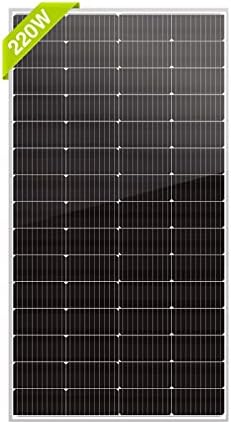# Shine On: An Upbeat Comparison of Different Types of Solar Panels
Living a life powered by the sun has been a transformative experience. There I was, deep in the woods, surrounded by the embrace of nature, basking in warm sunshine while my little cabin hummed to life thanks to solar panels above. It wasn’t just about generating electricity; it was about embracing a more sustainable lifestyle, making a connection to the environment, and enjoying the peace of mind that came with harnessing renewable energy. Throughout my journey, one topic kept me buzzing with excitement: the variety of solar panels available and how each one could fit different lifestyles, needs, and budgets.
In this article, we’ll delve into the different types of solar panels, comparing their features, benefits, and ideal uses, all while keeping our spirits high and energy-efficient! Let’s get started on this radiant journey as we explore which solar panel matches your unique off-grid dreams.
## The Solar Panel Spectrum: A Quick Overview
Solar panels generally fall into three main categories: **Monocrystalline**, **Polycrystalline**, and **Thin-film**. Each has its pros and cons, and understanding the distinctions can help you make an informed decision. Let’s break down the characteristics of each panel type so you can choose wisely on your solar adventure!
### Monocrystalline Solar Panels: The Premium Player
**Monocrystalline solar panels** are the Ferrari of the solar world – sleek, efficient, and quite popular among enthusiasts. What makes them stand out?
– **Efficiency**: Monocrystalline panels are made from single-crystal silicon, which allows for high efficiency rates, typically between 15% to 22%. If you’re in a tight space or have high energy demands, these panels might be your best bet.
– **Longevity**: With warranties often spanning 25 years or more, they promise durability and longevity.
– **Aesthetic Appeal**: These panels are usually black and have a uniform look that many find visually appealing.
**Pro Tip**: If you’re short on rooftop space but still want maximum efficiency, go for monocrystalline panels! They produce more power in a limited area, making them perfect for tiny homes or cabins with restricted roof space.
### Polycrystalline Solar Panels: The Budget-Friendly Option
**Polycrystalline solar panels** are like the dependable workhorse. While they may not win any beauty contests, they hold their ground in practicality and affordability. Here’s what you need to know:
– **Cost-Effective**: Generally, these panels are less expensive than their monocrystalline counterparts, making them a great option for budget-conscious consumers.
– **Moderate Efficiency**: With efficiency rates ranging from 13% to 17%, they’re still a solid choice, especially for residential settings where space isn’t as much of a concern.
– **Environmental Impact**: Their manufacturing process uses less energy than monocrystalline panels. So if you’re all about reducing your carbon footprint, you’ll feel good about this choice.
**Pro Tip**: If you have ample roof space and want a cost-effective solution for generating power, polycrystalline panels are a fantastic option to consider!
### Thin-film Solar Panels: The Newcomer
**Thin-film solar panels** are the newcomers that have been making headlines with their innovative technology. While they may not yet rival the efficiency of crystalline options, they bring some unique benefits:
– **Versatility**: These panels can be used in various applications, from flexible solar roofs to solar cells integrated into building materials.
– **Lower Weight**: Thin-film panels are much lighter than crystalline panels, making them easier to install and suitable for unconventional surfaces like RVs and boats.
– **Performance in Low Light**: They can perform relatively well in low light conditions, making them beneficial in shaded areas.
**Pro Tip**: If you’re into unconventional solar solutions—like integrating solar panels into your roof or mobile setups—give thin-film panels a closer look.
## Factors to Consider When Choosing Solar Panels
Now that we’ve explored the different types of solar panels, let’s discuss some factors to consider when making your choice. Here’s how to keep your energy focused:
### 1. **Space Availability**
Evaluate how much roof space you have. Smaller spaces may benefit more from high-efficiency monocrystalline panels, while larger roofs can accommodate polycrystalline options.
### 2. **Budget Constraints**
How much are you willing to invest? Polycrystalline panels might fit your budget better, while monocrystalline panels could be seen as a long-term investment.
### 3. **Aesthetic Preferences**
Consider how a panel type will look on your home. If appearance is essential, monocrystalline panels usually win this round.
### 4. **Energy Needs**
Estimate your energy requirements and how you plan to use the power produced. If you opt for the highest efficiency, evaluate your long-term power needs accordingly.
## Installation and Maintenance
Once you’ve settled on a type of solar panel, the next step is installation. Hiring a professional installer is often the best route to ensure everything runs smoothly. However, if you’re a DIY enthusiast, many kits are available for those who want to tackle the installation themselves.
### Regular Maintenance
Maintaining your solar panels is essential for optimal performance. Cleaning dirt, dust, and debris from the surfaces can prevent efficiency drops. A gentle wash with water and mild soap will usually do the trick.
## The Future of Solar Technology
As solar technology rapidly advances, we can look forward to innovations like bifacial panels (collecting sunlight from both sides) and enhanced energy storage systems. This evolution promises to make solar energy even more accessible and efficient.
## Wrapping It Up
Choosing the right solar panel isn’t just a decision about technology; it’s about embracing a lifestyle that celebrates sustainability and energy independence. Regardless of your choice—whether it’s the high-efficiency monocrystalline panels, the cost-effective polycrystalline, or the versatile thin-film—there’s a world of sunlight waiting to be harnessed.
So grab your sun hat, soak up the rays, and embark on your solar adventure with energy and excitement. Embrace the journey, and let the sunshine power your off-grid retreat into a sustainable oasis!
### Pro Tips Recap
1. **Choose Monocrystalline for limited space but high energy needs.**
2. **Opt for Polycrystalline if you have abundant roof space and need a budget-friendly option.**
3. **Consider Thin-film technology for innovative installations or unconventional setups.**
4. **Regularly clean your panels to maintain optimal efficiency.**
The sun is shining bright, and with the right solar panels, you can harness that energy for a vibrant and sustainable future!



